Grok AI
This node generates text or images based on user prompts using Grok AI.
API Key
Generate an API key from your Grok account to connect to Grok AI.
Type
You can choose the type to process the request with Grok, either Text or Image.
Text
When selecting this type, you can input text or images, and the output will always be text.
Image
When selecting this type, you can input text or images, and the output will always be an image.
Model
You can choose a model suitable for the selected type. For example, a model with text output can be used with the Text type, and a model with image output can be used with the Image type. In addition to available models, you can manually add other models listed on the Model page.
Below is a description of the models listed on the Model page:
grok-2-vision-1212
Description
A version of Grok 2 optimized for vision processing. The "Vision" in the name indicates its ability to analyze images, videos, or other visual data alongside text.
Capabilities
- Image Analysis: Can recognize objects, describe image content, or answer questions related to images.
- Multimodal Support: Combines text and images for more detailed responses.
Applications Suitable for tasks like image analysis and generating image descriptions.
Other Versions
grok-2-vision: The standard version of Grok 2 with vision capabilities.grok-2-vision-latest: The latest version of Grok 2 Vision, potentially including improvements in performance, accuracy, or visual data processing.
grok-2-image-1212
Description
A Grok 2 model focused on image-related capabilities. The "image" in the name suggests it is designed for generating or editing images, differing from "vision" (which focuses on analysis).
Capabilities
- Image Generation: Can create images from text prompts (text-to-image).
Applications Suitable for tasks like generating images based on text input.
Other Versions
grok-2-image: The standard version of Grok 2 with image processing capabilities.grok-2-image-latest: The latest version of Grok 2 Image, potentially including improvements in image quality or performance.
grok-2-1212
Description
The main version of Grok 2, not focused on vision or image processing but rather a versatile language model.
Capabilities
- Natural Language Processing: Answers questions, generates text, translates, or supports text-related tasks.
- Reasoning: Provides logical, detailed, and highly reasoned responses.
Applications Suitable for tasks like conversation, question answering, research support, or integration into text-processing applications.
Other Versions
grok-2: The standard version of Grok 2.grok-2-latest: The latest version of Grok 2, potentially including improvements in performance, accuracy, or language capabilities.
Note
You should only use the models listed above, as beta models are currently unusable: 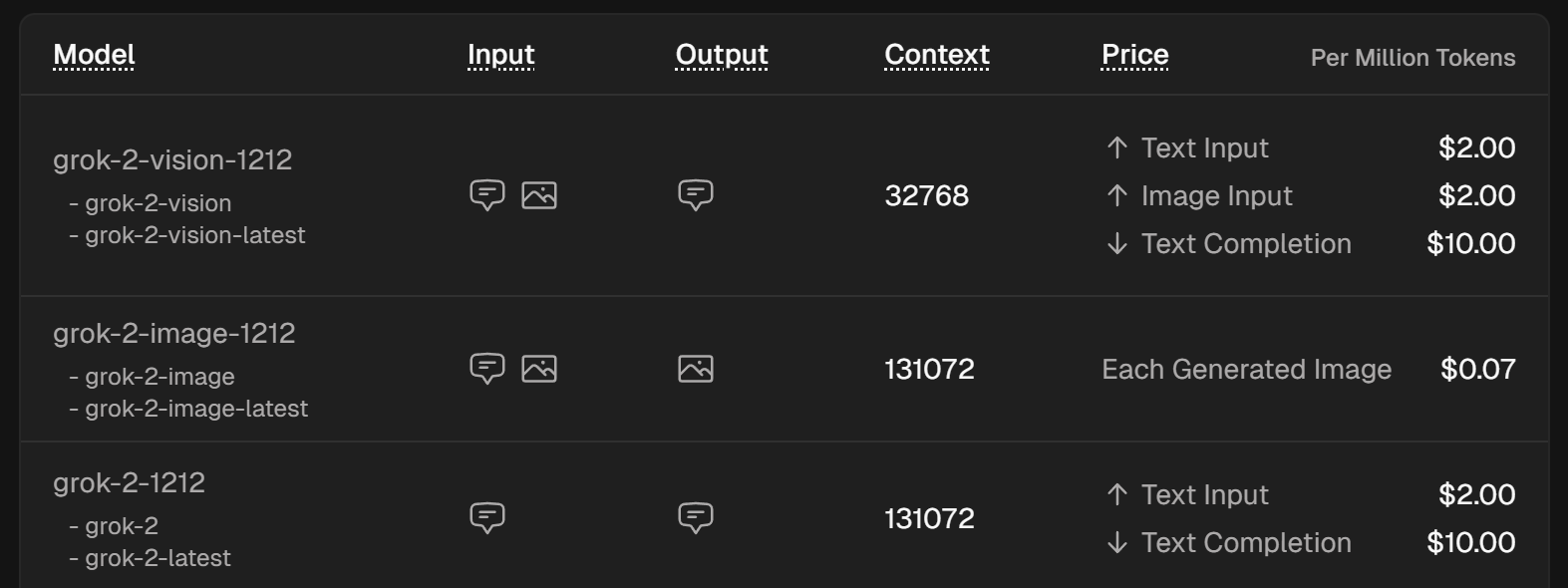
Prompt
Specify the request for the chat AI to process.
System
Use commands to guide the AI’s behavior, allowing you to set its role, style, or rules before starting the conversation. Without a system prompt, the AI may respond randomly or inconsistently, as large language models lack an inherent sense of role.
For example:
- System: "Respond as a data scientist using technical terminology" produces different responses than:
- System: "You are a poet."
Assign to Variable
Assign the output to a Variable.
- Variable Name: Name of the variable to assign the value to. This field appears when you select
Assign to Variable.
Insert into Table
Insert the value into a column in a Table.
- Select Column: The column where the value will be inserted. This field appears when you select
Insert into Table.
Practical Example
For example, you want to ask the AI to generate a question for the Professor AI in the Kite AI testnet as follows:
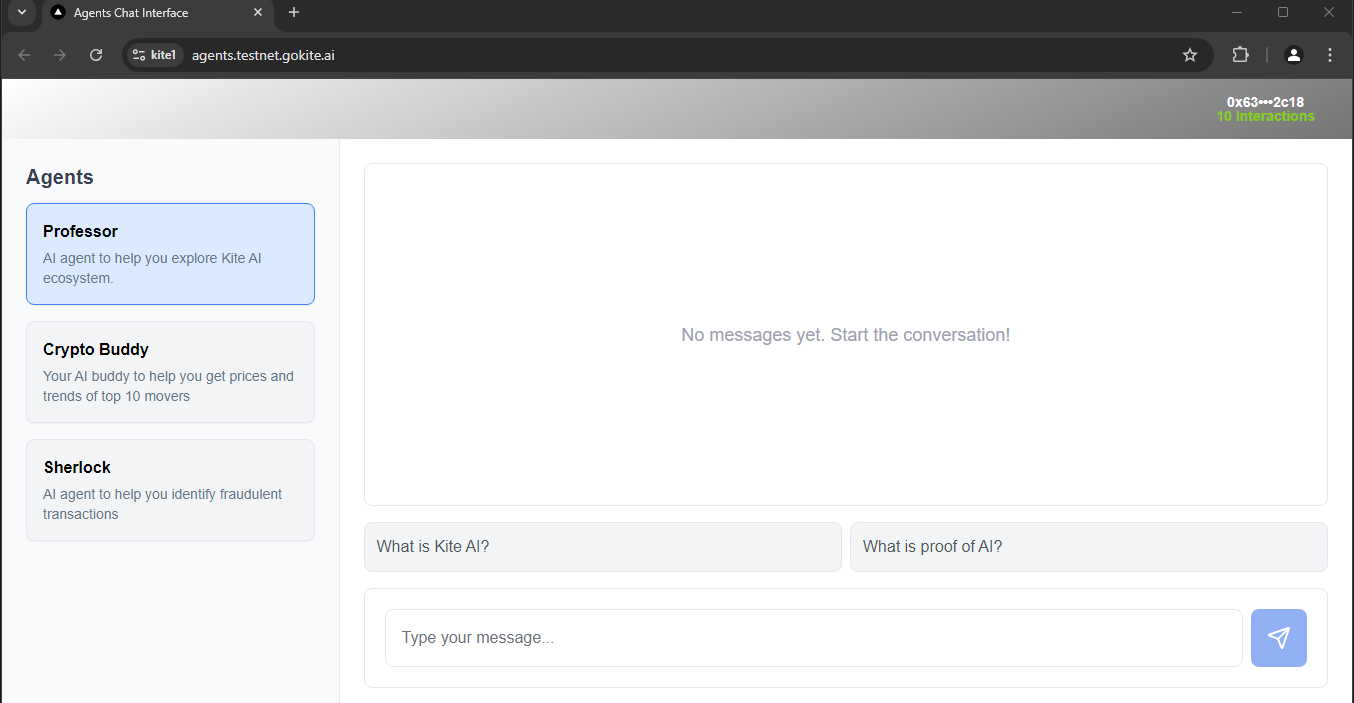
To achieve this, you configure the Grok AI node as follows:
First, to create the API key, you visit API Key, then select the key icon:
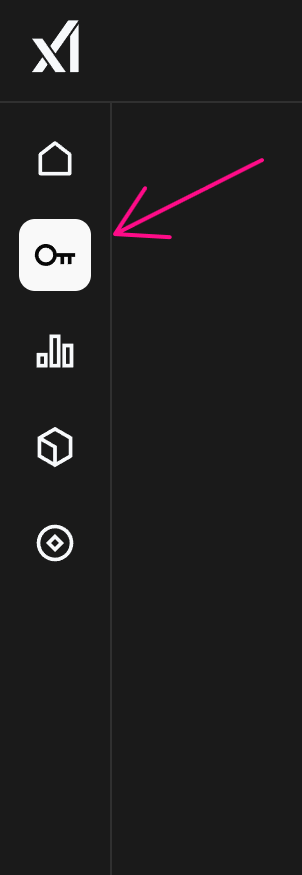
Next, you click Create API key, enter a name, and select Save:

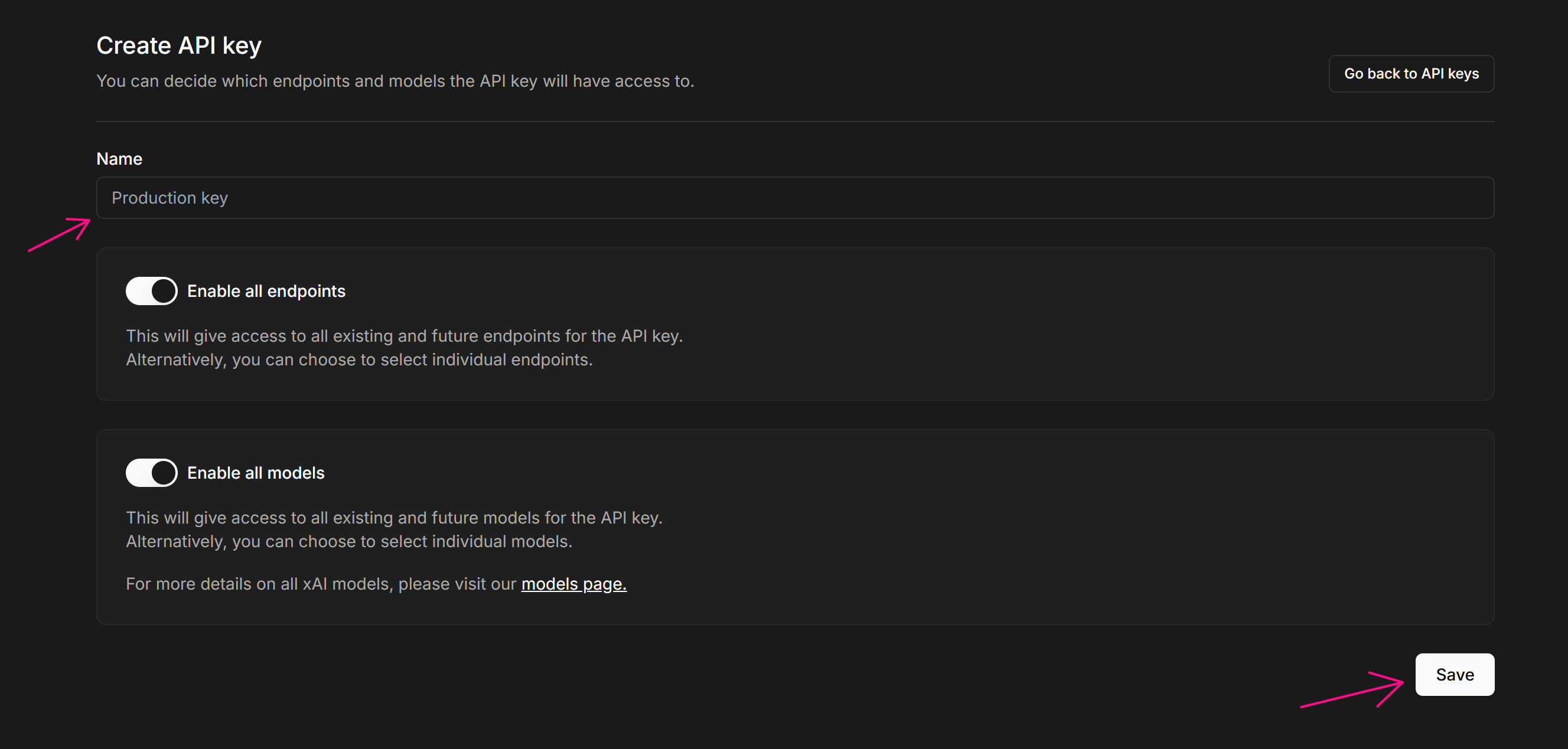
Then, you copy the key:

After creating the Grok AI node, you enter the API key into the API Key field
For the Model field, since you want to generate a question, you choose the grok-2-1212 model, suitable for question generation
For the Prompt field, since you want to generate a question for the Professor AI, which helps explore the Kite AI testnet ecosystem, you describe the prompt as: Create a question related to the Kite AI testnet ecosystem. You can also add requirements like question in English, no more than 100 characters, return only the question without additional characters. The prompt is entered as follows
For the System field, since you are asking as someone seeking information, you want the AI to generate a question as if from a beginner with limited knowledge about the Kite AI testnet. You enter: Create the question as someone with little knowledge about the Kite AI testnet, using beginner-friendly language
After running the node, it returns a question. To capture the question, you use a variable or table. For ease of use in the workflow, you assign the question to a variable named questionAI
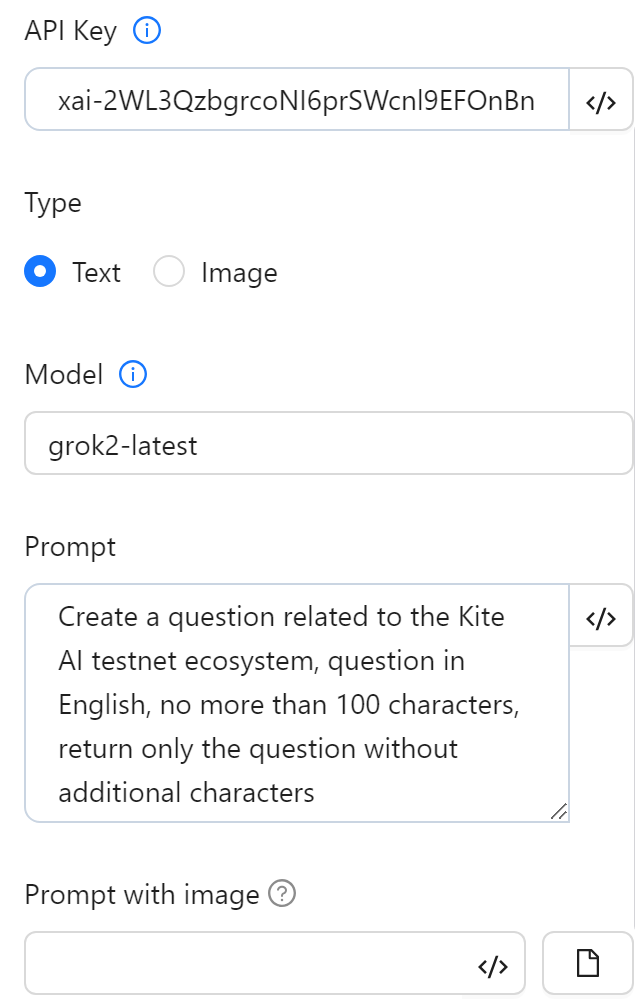
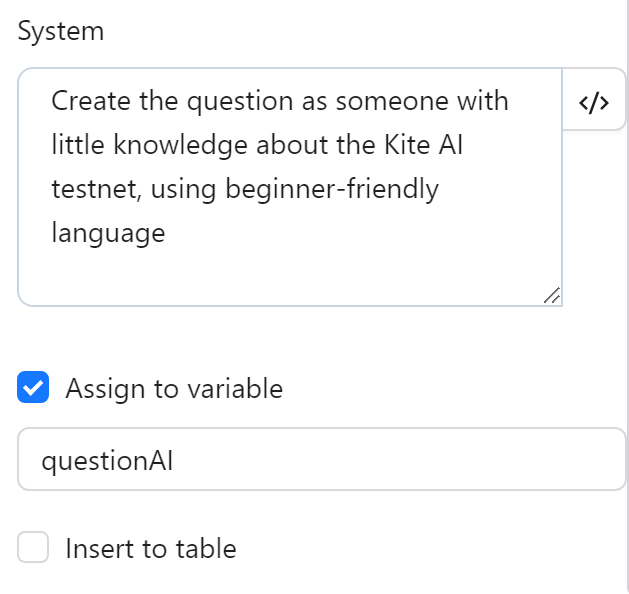
After configuration, you run the node, and the AI returns the result in the questionAI variable as follows:

After obtaining the question, you use a Key Press node to input the question, using the expression to retrieve the variable value: {{variables.questionAI}}, and send it to the AI:
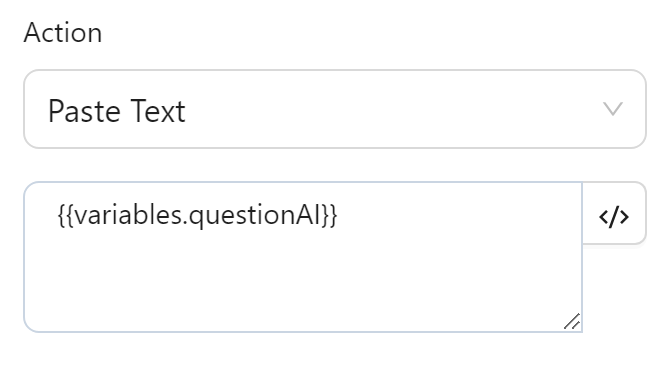
The text is then displayed as follows:
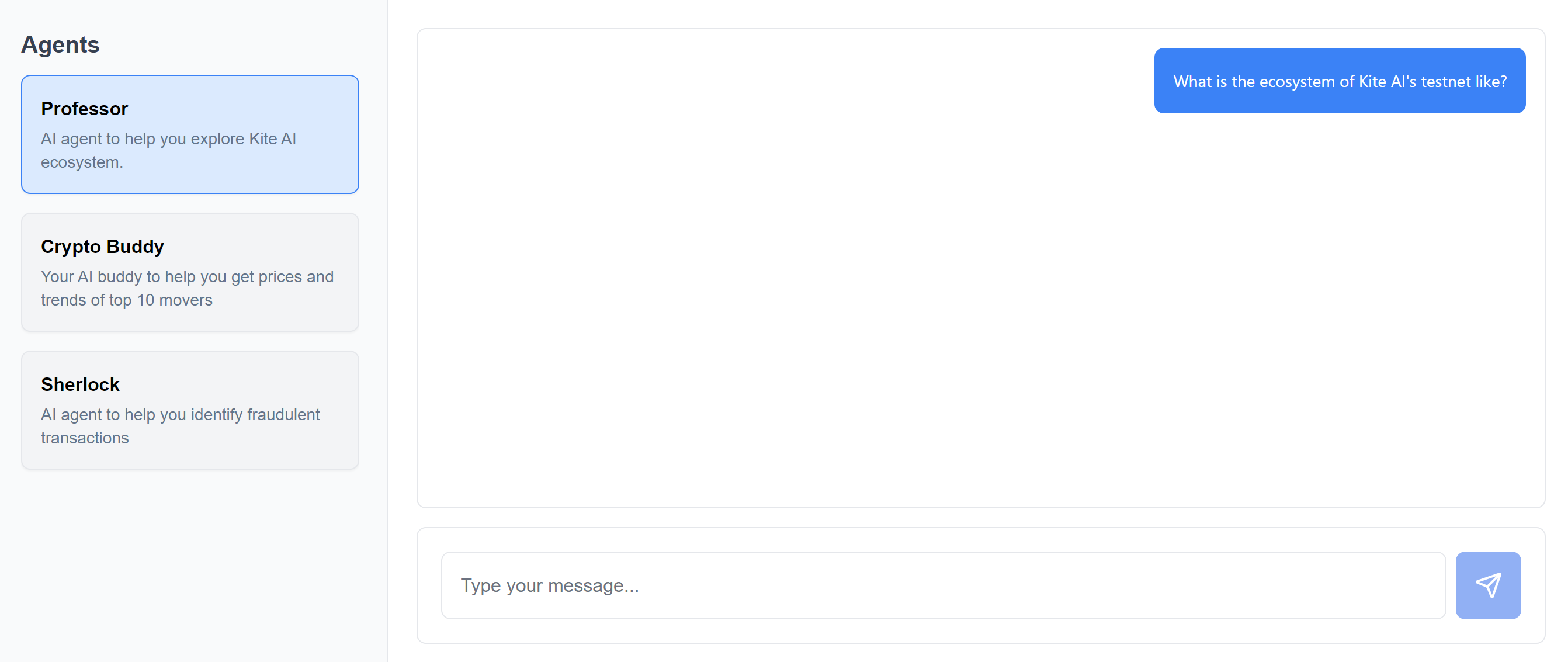
Thus, you have successfully used the Grok AI node to generate a question for the Kite AI testnet.
